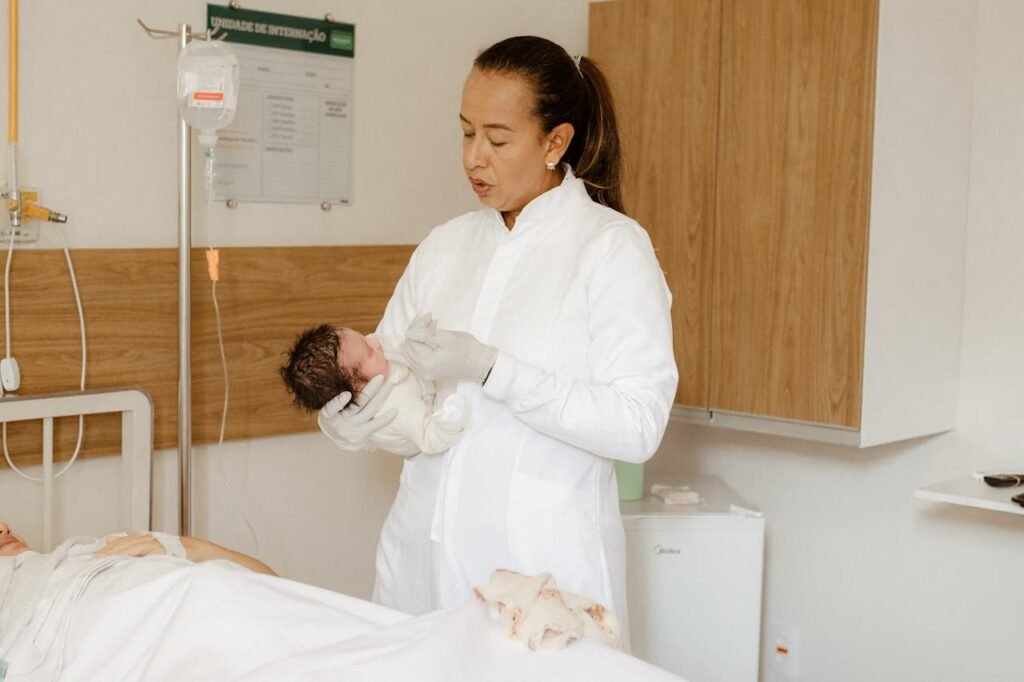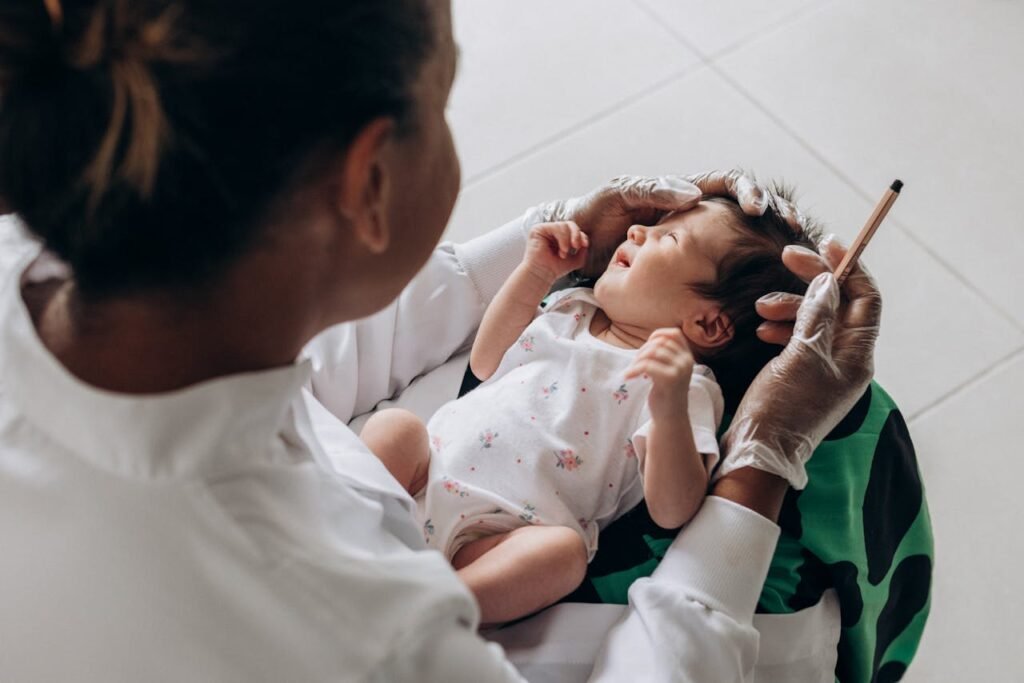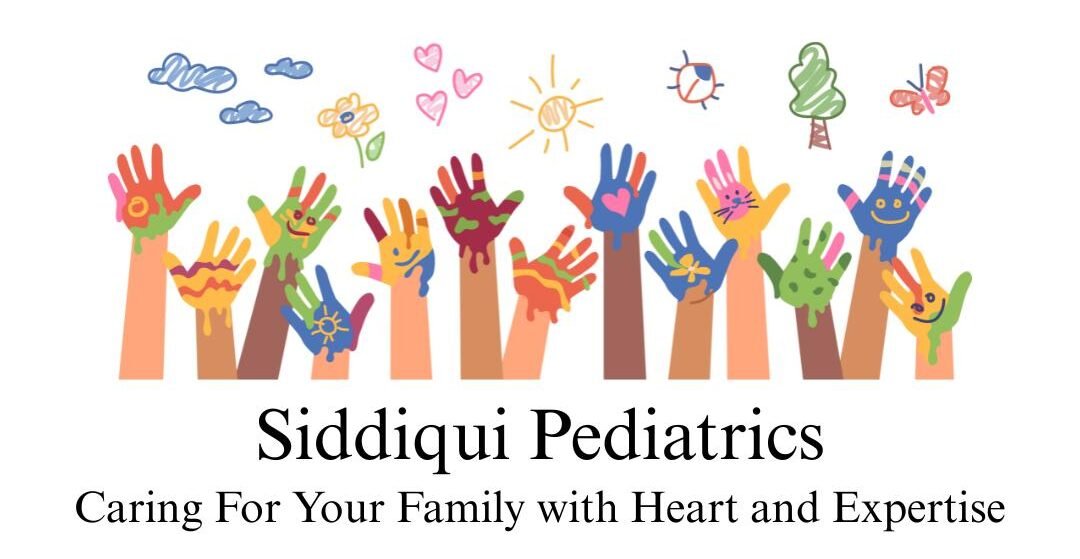Welcoming your little one into the world is an incredible journey filled with joy, wonder, and sometimes, concern. As a parent, you learn to interpret every coo, yawn, and cry—but knowing when to seek professional medical care can be challenging. This guide will take you through 10 critical signs that it’s time to consult a baby doctor near you, ensuring you provide the best possible care for your child. Each section is detailed with actionable steps, red‑flag symptoms, and preparation tips for your pediatric visit. Let’s dive in.
1. High or Persistent Fever
A mild fever can signal your baby’s immune system at work, especially post‑immunization. However, certain thresholds require immediate evaluation:
- Under 3 months: Rectal temperature ≥100.4°F (38°C)
- 3–6 months: Rectal temperature ≥101°F (38.3°C) lasting more than 24 hours
- Over 6 months: Temperature ≥102°F (38.9°C) without clear cause
Why It Matters: High fevers can indicate serious infections such as meningitis or urinary tract infections. Babies can dehydrate quickly and become lethargic.
Action Steps:
- Take a precise rectal temperature with a digital thermometer.
- Monitor for lethargy, poor feeding, or irritability.
- Contact your pediatrician immediately if thresholds are met or if the fever persists beyond 24 hours.
2. Breathing Difficulties
Infants normally breathe between 30–60 breaths per minute. Signs of respiratory distress include:
- Rapid breathing (over 60 breaths per minute)
- Grunting with each breath
- Flaring nostrils or chest retractions (skin pulling in between ribs)
- Bluish tint around lips or nails
Possible Causes: Bronchiolitis, pneumonia, asthma onset, or airway obstruction.
Action Steps:
- Sit your baby upright to ease breathing.
- Check for choking hazards or nasal congestion.
- Seek urgent pediatric evaluation if distress signs persist or worsen.
3. Refusal to Eat or Drink

Babies rely on frequent feeds for growth. Watch for:
- Significant drop in feeding volume for two consecutive feedings
- Refusal to latch or bottle-feed
- Fewer than 4 wet diapers in 24 hours
Why It Matters: Indicates possible dehydration, infections, or gastrointestinal issues.
Action Steps:
- Offer small, frequent feeds.
- Check for fever or mouth sores.
- Contact a pediatrician if feeding refusal and dehydration signs appear.
4. Uncontrolled Vomiting or Diarrhea
Occasional spit-up is common. However, seek care if you notice:
- Projectile vomiting
- Purple or green bilious vomiting
- More than 4–5 diarrhea stools in a day
- Blood or mucus in vomit or stool
Risks: Dehydration, electrolyte imbalance, and malabsorption.
Action Steps:
- Keep a log of vomiting/diarrhea episodes.
- Offer oral rehydration solution per pediatrician’s advice.
- Visit the doctor for persistent or severe cases.
5. Extreme Fussiness or Lethargy
Occasional crankiness is normal, but watch for:
- Inconsolable crying longer than 3 hours
- Limpness or lack of muscle tone
- Unusual lethargy, sleeping excessively or barely waking to feed
Potential Causes: Ear infections, colic, metabolic issues, or meningitis.
Action Steps:
- Check vital signs (temperature, breathing rate).
- Attempt to soothe with feeding, swaddling, or white-noise.
- If symptoms persist, book an urgent pediatric appointment.
7. Developmental Concerns
Key milestones give insight into your baby’s neurodevelopment. Consult a pediatrician if your child:
- Doesn’t smile by 8 weeks
- Doesn’t coo or make sounds by 4 months
- Doesn’t roll over by 6 months
- Shows delayed babbling by 9 months
Early Support: Identifying delays early allows for timely therapies. For practical tools to support your child’s communication growth, explore our article on How to Support Speech Development in Toddlers: Practical Tools for Parents.
Action Steps:
- Keep a milestone journal.
- Schedule a developmental screening with your pediatrician.
8. Concerning Rashes or Skin Lesions
Rashes range from harmless heat rash to serious infections. Seek help if you notice:
- Blistering or open sores
- Purple spots (petechiae) or bruising without trauma
- Rapidly spreading rash accompanied by fever
- Swelling around rash areas
Possible Causes: Allergic reactions, viral exanthems, meningococcemia.
Action Steps:
- Photograph the rash for documentation.
- Avoid home remedies without pediatric approval.
- Bring photos and observations to your doctor.
9. Disrupted Sleep Patterns
Healthy babies sleep 14–17 hours per day. Concerns include:
- Excessive sleepiness: Difficult to wake for feeds or diaper changes
- Night screaming: Gasps, choking sounds, or constant crying at night
Potential Issues: GERD, anemia, sleep apnea.
Action Steps:
- Monitor sleep logs and nighttime behaviors.
- Discuss feeding schedules or reflux symptoms with your pediatrician.
10. Exposure to Infectious Diseases
If your baby is exposed to contagious illnesses—like chickenpox, measles, or whooping cough—early intervention is crucial. Your pediatrician can:
- Recommend post-exposure prophylaxis
- Adjust immunization schedules
- Provide antiviral or antibiotic treatments
Action Steps:
- Note date and duration of exposure.
- Contact your pediatrician per clinic guidelines.
Preparing for Your Pediatric Visit

A structured approach ensures a thorough evaluation:
- Symptom Diary: Record temperatures, feeds, diapers, sleep, and behavior.
- Medical History: Bring immunization records and family medical information.
- Questions Checklist: Include feeding routines, developmental concerns, and environmental exposures.
This preparation maximizes your appointment efficiency and care quality.
Why Partner with a Pediatrician?
Pediatricians are experts in infant and child health—from preventive care and immunizations to developmental screenings and urgent interventions. Their guidance allows you to:
- Stay updated on vaccination schedules and preventive measures
- Receive personalized growth and nutrition plans
- Access behavioral and developmental support as your child grows
- Navigate challenges like screen-time safety in older children—read more in our guide, The Pediatrician’s Guide to Social Media Prep for Preteens
